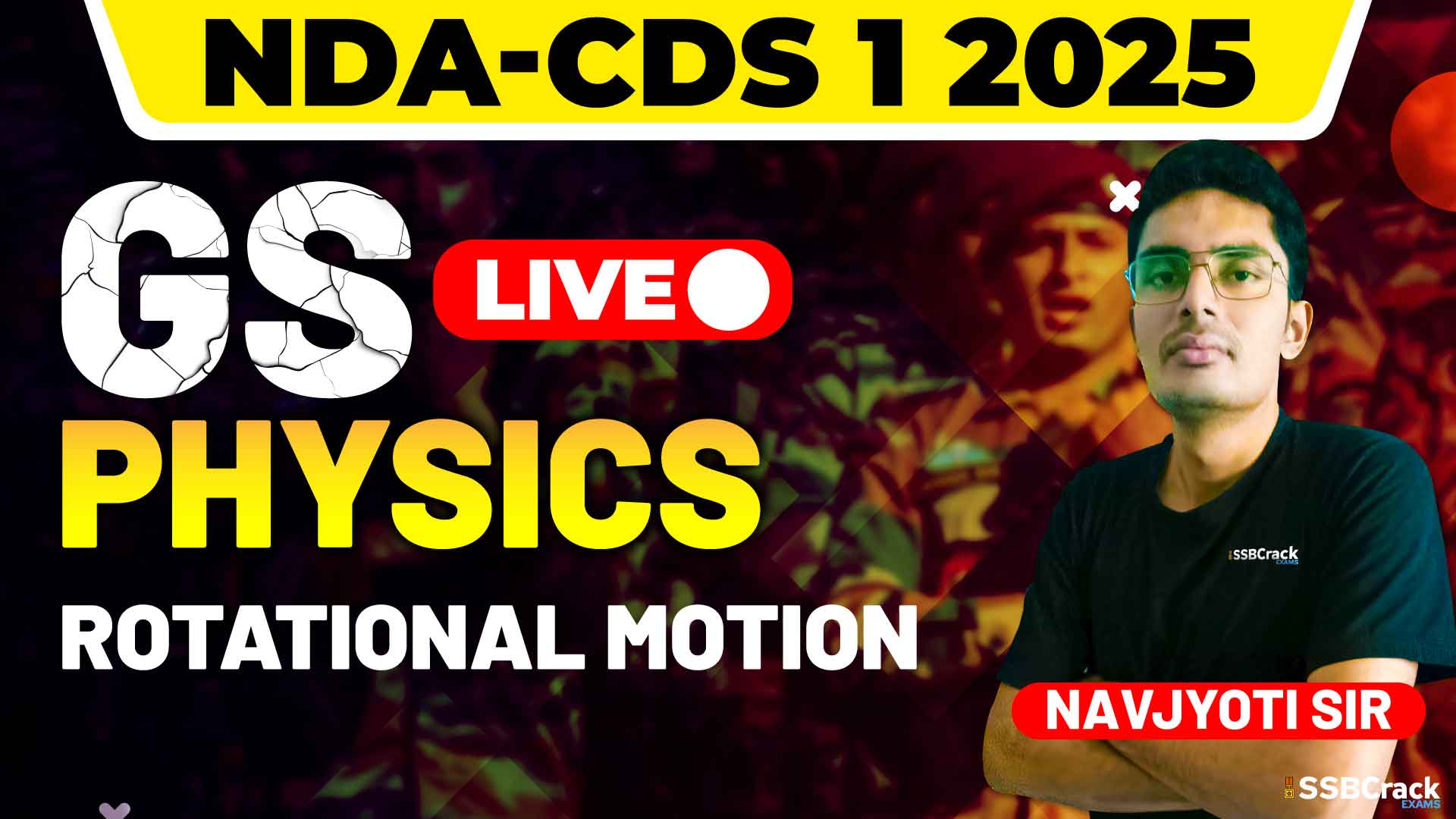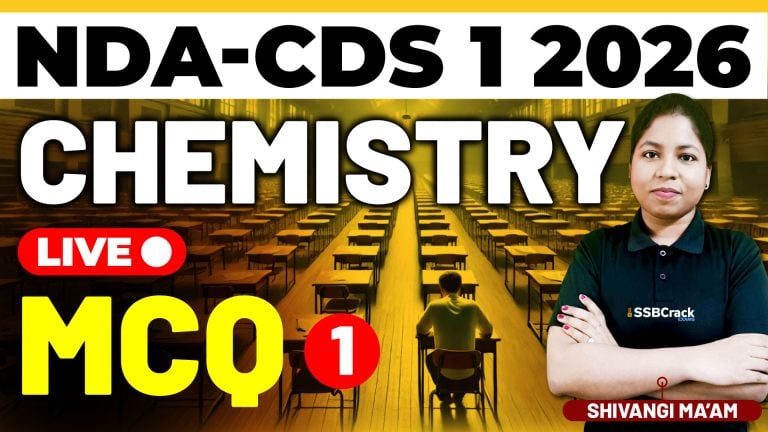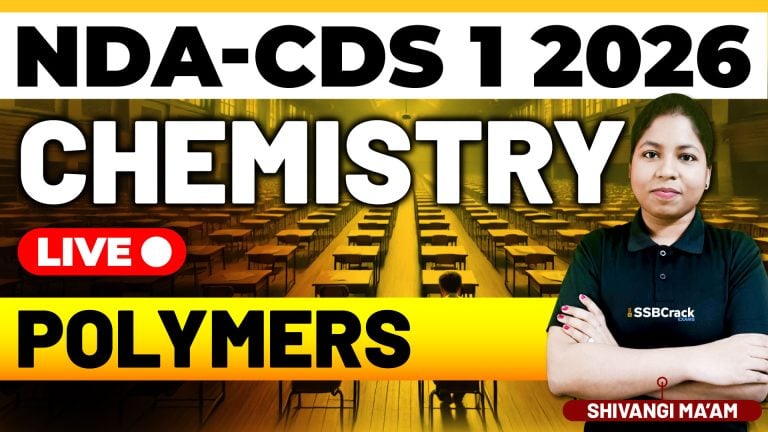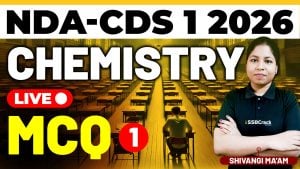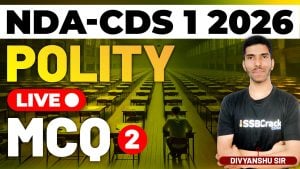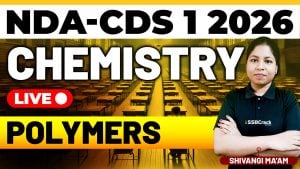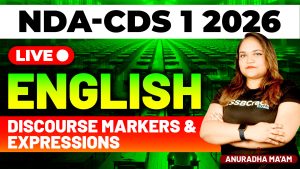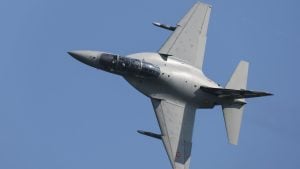The Physics section of competitive exams like the National Defence Academy and Naval Academy (NDA-NA) Exam – Paper II (GAT) and the Combined Defence Services (CDS) Exam – GK Paper often includes challenging yet rewarding topics. One such important topic is Rotational Motion, which combines theoretical understanding with practical problem-solving. A recent class dedicated to this topic emphasized strengthening core concepts and practicing multiple-choice questions (MCQs) from previous years to prepare effectively for the exams.
Here’s a comprehensive overview of the class, the strategies discussed, and tips to excel in this topic for the NDA-NA and CDS exams.
Details of the Class
The session was meticulously designed to cover the key subtopics of Rotational Motion while providing ample practice through MCQs. Below is a detailed breakdown of the areas covered:
1. Centre of Mass
The class began with a discussion on the centre of mass—the point where the entire mass of a system can be considered to be concentrated. The focus was on understanding its physical significance and how to determine the centre of mass for different objects. Questions included identifying the centre of mass for regular shapes like rods, rings, and spheres.
2. Translational and Rotational Motion
The next segment explored the distinction between translational motion (motion in a straight line) and rotational motion (motion about a fixed axis). Emphasis was placed on real-life examples, such as the motion of a rolling ball or a spinning top, to help students visualize these concepts.
3. Axis of Rotation
The concept of the axis of rotation, which is critical to understanding rotational motion, was discussed in depth. Students learned about fixed and arbitrary axes and practiced questions that required determining the effects of rotation about different axes.
4. Moment of Inertia
The moment of inertia, or the rotational equivalent of mass, was a major focus. The class explained how the distribution of mass around an axis affects rotational motion. Students practiced identifying the moments of inertia of various geometrical objects and systems.
5. Torque
Students explored the concept of torque, which measures the tendency of a force to cause rotation. Practical examples, like opening doors or turning wrenches, were discussed to help understand this concept intuitively.
6. Angular Momentum
Angular momentum, the rotational counterpart of linear momentum, was introduced as a critical concept in rotational dynamics. MCQs tested students on scenarios involving conservation of angular momentum, a principle frequently featured in competitive exams.
7. Rotational Kinetic Energy
The energy associated with rotating bodies, or rotational kinetic energy, was discussed along with how it contributes to the total energy of a system. Students solved questions requiring them to compare kinetic energies in systems involving both rotational and translational motion.
MCQ Practice
The class involved extensive practice of MCQs, including:
- Previous Years’ Questions: These provided insights into the exam pattern and frequently asked subtopics.
- Expected Questions: These helped students prepare for potential new patterns and applications.
- Concept-Based Questions: These tested foundational understanding, such as distinguishing between rotational and translational motion or identifying axes of rotation.
Solving these questions not only enhanced problem-solving speed but also strengthened students’ ability to tackle tricky and conceptual problems.
Strategies for Preparing Rotational Motion
To excel in this topic, it’s essential to follow a structured and disciplined preparation strategy. Here are some tips shared during the session:
1. Build a Strong Conceptual Foundation
Start by understanding the fundamental principles of rotational motion, including:
- The relationship between linear and rotational motion.
- The physical significance of terms like moment of inertia, torque, and angular momentum.
- Real-life applications to solidify conceptual clarity.
2. Relate Concepts to Practical Examples
Real-world examples can make abstract concepts more relatable and easier to grasp. For instance:
- Moment of Inertia: Compare the effort needed to spin a thin rod versus a thick wheel.
- Torque: Think about the force applied to open a tightly shut door.
- Angular Momentum: Observe how a spinning skater speeds up when pulling their arms closer.
3. Solve Topic-Wise MCQs
After mastering the basics, practice MCQs topic by topic. This approach ensures you gain confidence in individual subtopics, such as torque, angular momentum, and rotational kinetic energy.
4. Analyze Previous Years’ Papers
Understanding the pattern of questions asked in previous NDA-NA and CDS exams can give you a clear idea of which concepts are frequently tested. Focus on these high-yield areas during your preparation.
5. Draw Diagrams
While solving problems, draw simple diagrams to visualize the scenario. For example:
- Depict the axis of rotation for a spinning object.
- Sketch free-body diagrams to understand torque and force directions.
Diagrams can make problem-solving faster and more intuitive.
6. Use Conceptual Shortcuts
Learn quick methods to identify answers without lengthy calculations. For instance, recognizing symmetrical objects’ moments of inertia can save time in exams.
7. Practice Mock Tests
Take full-length mock tests to simulate the exam environment. Analyze your performance after each test and focus on areas where you made mistakes.
8. Revise Regularly
Rotational motion involves interconnected concepts. Regular revision helps retain these connections and prevents confusion closer to the exam.
Conclusion
The recent class on Rotational Motion was a comprehensive session designed to strengthen students’ understanding of key concepts and enhance their problem-solving skills through targeted MCQ practice. By focusing on frequently asked questions and expected patterns, the class ensured aspirants were well-prepared for the Physics section of the NDA-NA and CDS exams.
To excel in this topic, aspirants must focus on conceptual clarity, consistent practice, and applying the principles of rotational motion to solve real-world problems. With regular revision, strategic preparation, and thorough practice, success in this topic—and the exams as a whole—is achievable.
Stay focused, keep practicing, and aim high. Best of luck with your preparation journey!
